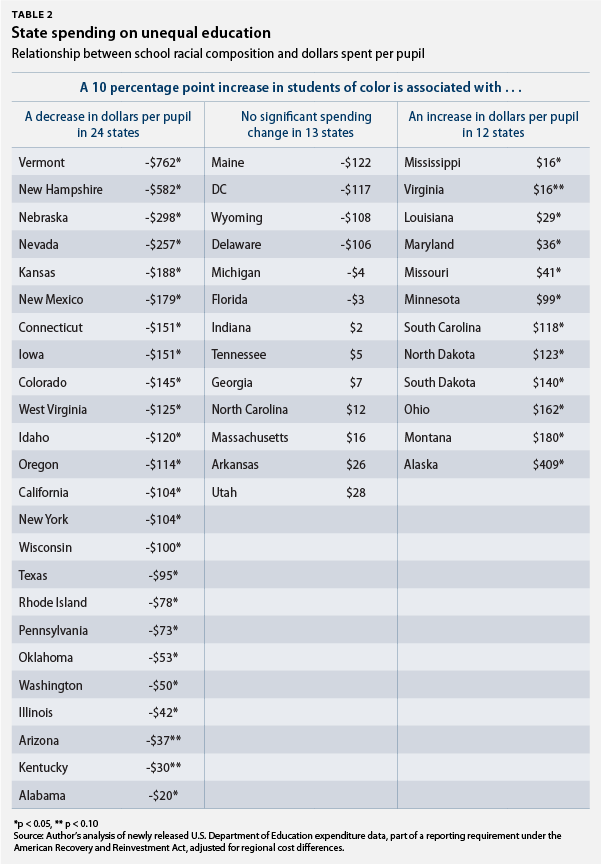Read “Unequal Education: Federal Loophole Enables Lower Spending on Students of Color.”
When it comes to spending on the education of our children, students of color are being shortchanged, according to the Center for American Progress’s latest education report, “Unequal Education: Federal Loophole Enables Lower Spending on Students of Color.”
Nearly 60 years after the 1954 landmark ruling in Brown v. the Board of Education, in which the U.S. Supreme Court declared public education is “a right which must be made available on equal terms,” racial inequities in school spending persist. Let’s look at some of the national numbers:
- Across the country schools spent $334 more on every white student than on every nonwhite student
- Mostly white schools (90 percent or more white) spent $733 more per student than mostly nonwhite schools (90 percent or more nonwhite)
- The United States spends $293 less per year on students in mostly nonwhite schools than on students in all other schools. That’s 7 percent of the median per-pupil spending
Since fully 35 percent of the nation’s students of color attend school in either California or Texas, examining the relationship between the percent of students of color and dollars spent per student can bring the problem into sharper focus.
- In California schools serving 90 percent or more nonwhite students, per-pupil spending is $191 less than at all other schools, and $4,380 less than at schools serving 90 percent or more white students
- In Texas schools serving 90 percent or more nonwhite students, per-pupil spending is $514 less than at all other schools, and $911 less than at schools serving 90 percent or more white students
Just how big are these differences? In California the average high-minority school has 759 students. If an average-sized school got an extra $4,380 for every student, it would mean an extra $3.3 million a year. If that same school were to get a more modest boost of $191 per student to bring it in line with the majority of schools in the state, then it would get approximately $145,000 extra per year. Those extra dollars would pay the salaries of additional classroom teachers or buy any number of valuable educational inputs such as computers, guidance counselors, or teaching coaches.
In Texas the average high-minority school is 708 students; new teachers are paid $39,150 and veterans earn $47,100 annually. If an average high-minority school in the Lone Star state were to receive an extra $514 per-pupil funding—enough to bring it up to the level of spending the rest of the schools in the state enjoy—it would be able to pay the salaries of seven veteran teachers or nine new teachers.
One of the more sobering findings of our report is that as the number of students of color goes up at a school the amount of money spent on students goes down.
- An increase of 10 percent in students of color is associated with a decrease in spending of $75 per student
This disturbing trend was true in 24 states as shown in the chart below. Moreover, these 24 states educate 63 percent of all students of color. In 13 states the percentage of students of color is not related to a school’s per-pupil spending. In 12 states an increase in the concentration of students of color is actually associated with an increase in per-pupil spending. This positive news, however, is tempered by the fact that only 12 percent of the nation’s students of color attend school in these states. (Note: New Jersey was excluded from the entire analysis because it mistakenly included federal spending in its report instead of only state and local spending.)

The bottom line: Across our country we are spending less on students of color than on white students, at least when it comes to state and local dollars. If the nation is to ever fully honor the intent and spirit of Brown v. Board of Education we must take steps to address and correct the disparities in funding for students of color.
Read “Unequal Education: Federal Loophole Enables Lower Spending on Students of Color.”